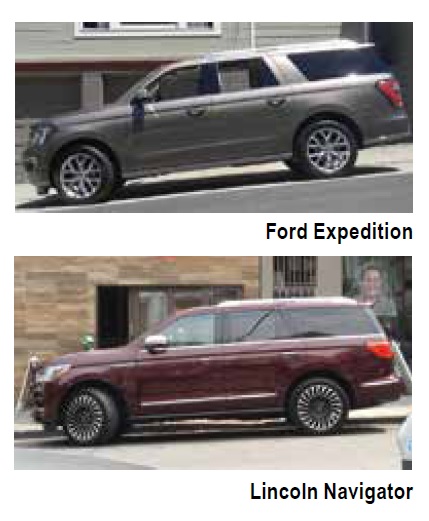 By Philip Ruth–
By Philip Ruth–
How fancy do you like to get? We are all regularly confronted with that question in our capitalist society. It’s tempting to define an identity with the relative parsimony or extravagance reflected by one’s own purchases.
These distinctions are the bread and butter of carmakers. The large profits of the expensive models fund the sale of low-margin economy jobs, as well as future research and development.
At Ford, this responsibility falls heavily on the shoulders of the company’s full-sized SUVs, the Ford Expedition and Lincoln Navigator. The entry price is more than $50,000 for the base Expedition. There are two lengths and three trim levels from which to choose, topping off at about $75,000 for the Platinum Max trim.
Naturally, the Navigator is more expensive. Four trims run from about $73,000 to just less than $100,000 for the longest and richest Lincoln SUV, the Navigator L Black Label.
At these prices, they’d better be fancy, and the respective Platinum and Black Label trims imbue the Ford and Lincoln with their own ample personalities. The Expedition takes a piecemeal approach to upgrades, with low-sheen wood and metal trim adorning a plastic structure that’s plucked from the F-150 pickup. Blocky and functional, the Expedition’s control interface is here to help.

The Navigator’s is here to impress. Previous fussy attempts on Lincoln’s part for the Navigator to mirror the company’s 1960s aesthetic have given way to an environment in the Black Label that grabs your eyeballs and runs them along sweeping padded curves, as well as the complex reflections in the alternately flat and concave surfaces. Lesser Navigators won’t have the Black Label’s admirable material consistency. It’s a high watermark for American car interiors, albeit at one of the highest prices.
Seats in both the Expedition and Navigator also represent steps in indulgence. The Expedition Platinum’s 10-way multi-contour seats with Active Motion massage give passengers three internal backrest pads with which to finely adjust the back support, so that the seat feels individually tailored.
Spend enough time in the tested Navigator’s seats and they’ll begin to feel like they’ve disappeared. The Black Label trim has as standard the 24-way seats that are also standard in the second-highest Reserve trim. The one I drove had the $1,250 “Perfect Position” 30-way seats.
Nothing is perfect, but these seats succeed in combining loose-pillow luxury with firm support. The effect is that your pressure points have all been cupped in their own plush spaces, and you nearly feel like you’re floating above it all. Thirty adjustments sound like gross overkill, until they add up to a bracingly relaxed state.
You wouldn’t choose between the Expedition and Navigator based on performance, as they both stop and turn with nimbleness that’s notable in vehicles with such mass. Instead, it really does come down to how fancy you want to get—do you want 10-way luxury, or 30-way? Assuming you could afford both, neither the Expedition nor the Navigator would disappoint.
Philip Ruth is a Castro-based automotive photojournalist and consultant (www.gaycarguy.com). Check out his automotive staging service at www.carstaging.com
Recent Comments